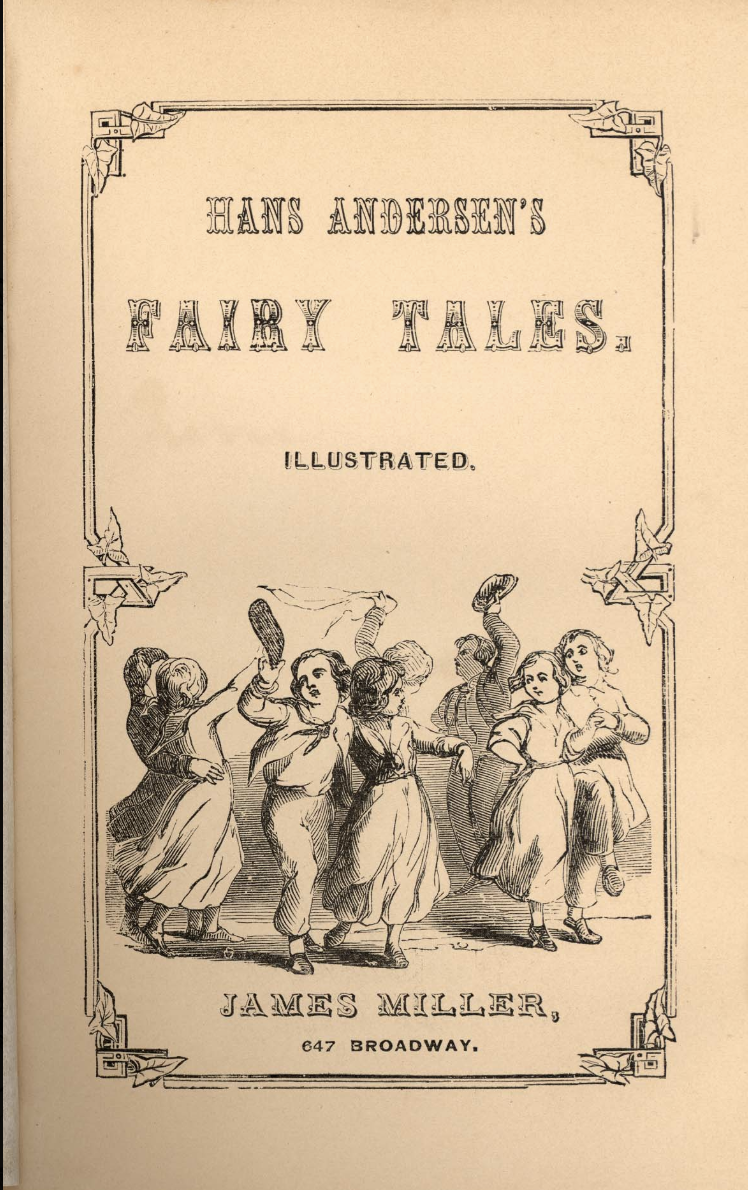
Fairy Tales by Hans Christian Andersen
Theodoros Kafantaris
Published on November 22, 2025
1. Introduction
Few books have shaped the imaginative landscape of childhood—and adulthood—quite like Hans Christian Andersen’s Fairy Tales. These stories aren’t just whimsical folklore; they are emotional, bittersweet, and deceptively profound narratives that have endured for nearly two centuries.
From The Little Mermaid to The Emperor’s New Clothes, Andersen’s tales have infiltrated global culture so deeply that modern adaptations often overshadow the original works. But reading these stories in their true form reveals something far richer: a blend of melancholy, humor, hope, and hard-earned wisdom that still resonates today.
This collection is significant not only because it ignited new directions in literary fairy tales but also because it introduced themes of vulnerability, compassion, and existential longing—ideas not typically associated with children's books.
In other words: Andersen didn’t just tell stories. He rewired our understanding of what a fairy tale could be.
2. About the Author
Hans Christian Andersen (1805–1875) was a Danish author best known for his literary fairy tales, though he also wrote novels, plays, travelogues, and poetry. Born into poverty, Andersen’s life had no shortage of hardship, and it shows—beautifully—in his writing. His stories often carry the emotional texture of someone who spent a lifetime feeling like an outsider.
His most iconic works include:
-
The Little Mermaid
-
The Snow Queen
-
The Ugly Duckling
-
The Emperor’s New Clothes
-
Thumbelina
What set Andersen apart was his distinctive narrative voice: heartfelt, sometimes somber, often humorous, and always deeply human. He wrote not to sanitize life for children but to capture its emotional complexity in a way both children and adults could appreciate.
An interesting fact: Andersen was notoriously sensitive and believed his friends made fun of him behind his back. Some scholars argue that this emotional fragility influenced stories like The Ugly Duckling, which reads suspiciously like literary self-therapy.
Despite (or because of) his insecurities, Andersen left behind a body of work that continues to shape global folklore, modern fantasy, and even blockbuster cinema.
3. Story Overview
Since Fairy Tales is a collection rather than a single narrative, this overview highlights the emotional and thematic arcs central to Andersen’s best-known stories.
a. “The Little Mermaid” – Longing and Sacrifice
Far from the cheerful Disney version, Andersen’s original mermaid doesn’t just want legs—she wants a soul, love, and a place in the human world. Her transformation comes with pain, sacrifice, and the risk of death. Ultimately, her journey is not rewarded with romance but with spiritual transcendence, making it one of Andersen’s most poignant and heartbreaking tales.
b. “The Ugly Duckling” – Becoming Yourself
Perhaps Andersen’s most autobiographical story, this tale follows a misfit duckling who is bullied, rejected, and misunderstood—only to discover he’s actually a swan. The story is simple but emotionally rich, highlighting themes of identity, patience, and the value of inner transformation.
c. “The Emperor’s New Clothes” – Social Pressure and Self-Deception
In this sharp satire, two swindlers convince an emperor that his new clothes are so exquisite only the enlightened can see them. Rather than admit confusion, the entire kingdom pretends the invisible garments exist—until a child blurts out the truth. It’s a hilarious (and timeless) commentary on pride, groupthink, and the human tendency to believe what we want to believe.
d. “The Snow Queen” – A Battle Between Warmth and Coldness (Literally and Emotionally)
One of Andersen’s most sophisticated stories, The Snow Queen follows the journey of Gerda as she sets out to rescue her friend Kai from the icy influence of the Snow Queen. It’s not just an adventure—it’s a meditation on innocence, friendship, resilience, and how love can thaw even the coldest hearts.
e. Themes Across the Collection – Joy, Sorrow, and the Human Heart
Across multiple stories, Andersen blends the whimsical with the tragic. Characters often endure hardship, loneliness, or sacrifice, but their struggles illuminate universal truths about courage, compassion, and self-growth. Instead of offering escapism, his tales confront the emotional realities of life—with just enough magic to make the lessons feel timeless rather than heavy-handed.
4. Key Takeaways
-
Fairy tales can be emotionally complex. Andersen’s stories challenge the assumption that children’s literature must be simplistic or cheerful.
-
Suffering can lead to transformation. Many of his characters face hardship that ultimately deepens their understanding or sense of self.
-
Humor and satire reveal social truths. Stories like The Emperor’s New Clothes show how easily pride and conformity cloud judgment.
-
Compassion and love are powerful forces. In The Snow Queen, emotional warmth becomes a literal form of salvation.
-
Beauty and tragedy often coexist. Andersen’s narrative style embraces both, making his stories more reflective of real human experience.
5. Why This Book Is a Must Read
Fairy Tales by Hans Christian Andersen is essential reading because it bridges the worlds of folklore, moral philosophy, and literary art. These stories have shaped global storytelling for nearly 200 years, influencing everything from children's literature to film, theatre, and modern fantasy writing.
More importantly, Andersen’s tales continue to resonate because they speak to universal human emotions—longing, courage, identity, love, and the quest for meaning. This collection isn’t just foundational to world literature; it’s a window into the enduring truths of the human heart, making it a worthy entry in any 100 Books You Must Read list.

